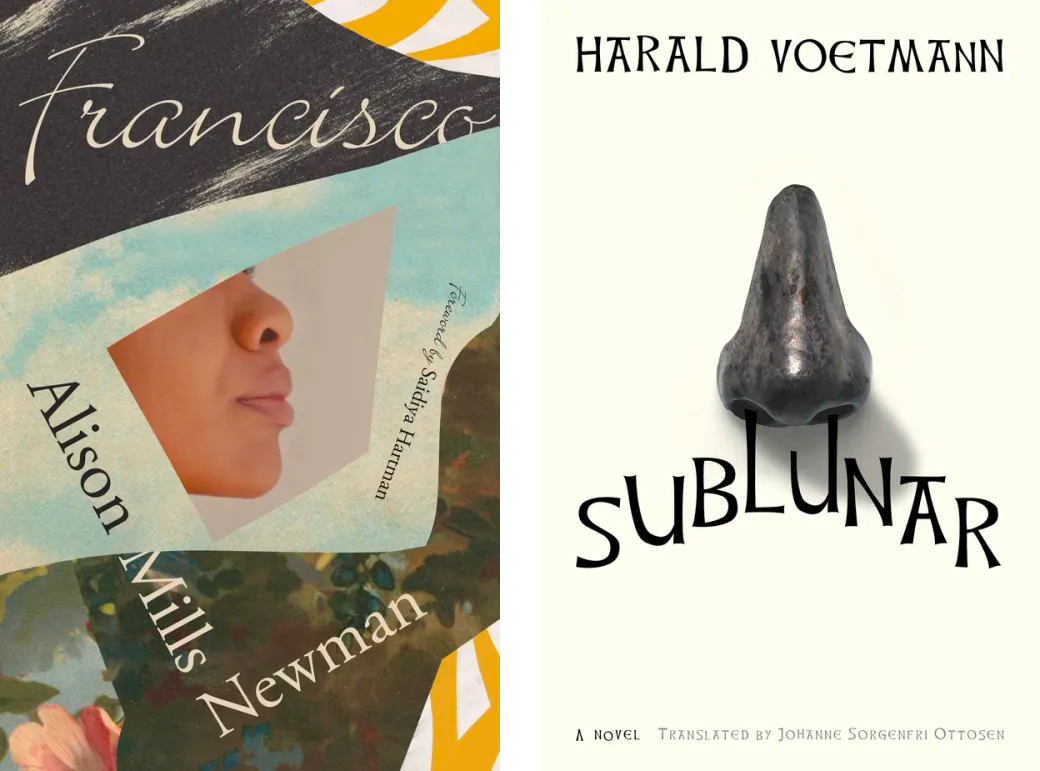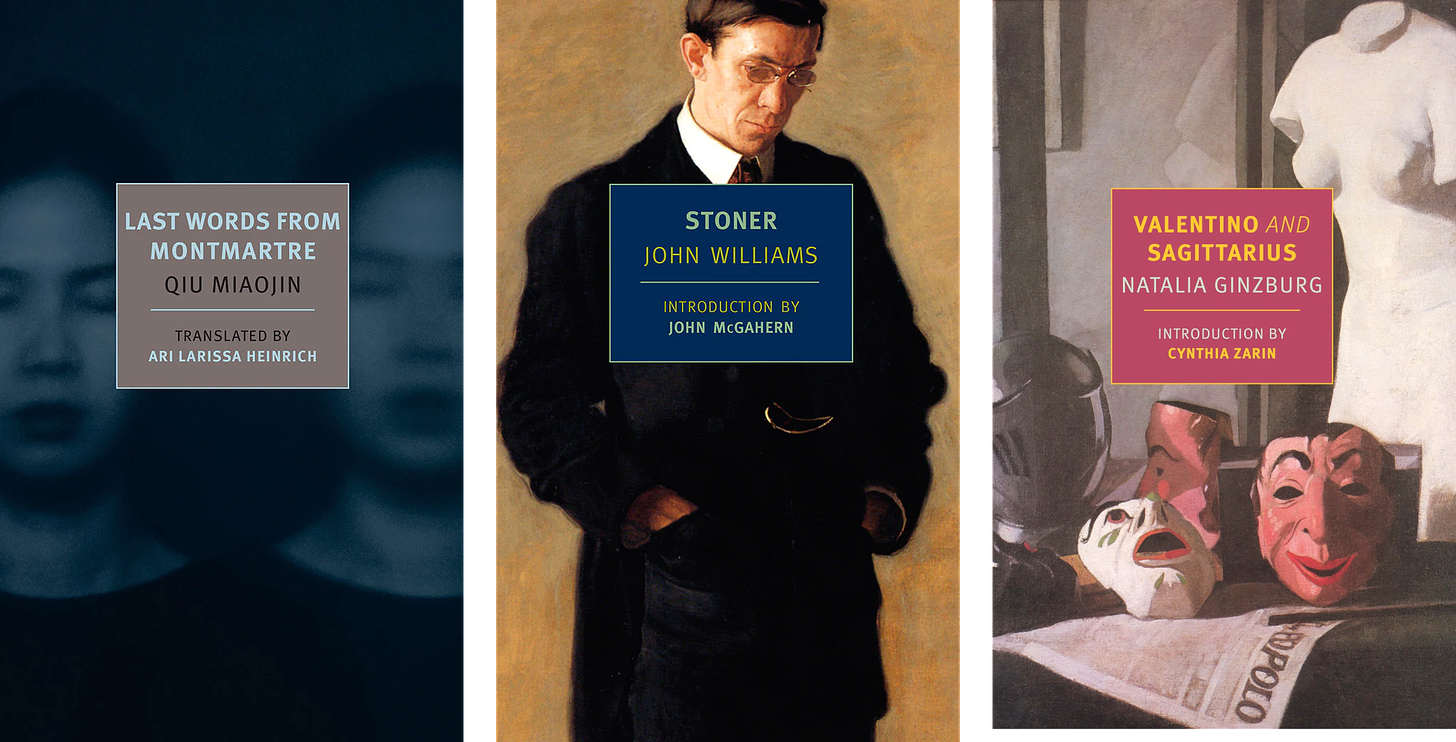

Discover more from One Thing
Celine Nguyen: In his 2014 book, Ways of Curating the Swiss curator Hans Ulrich Obrist reflected on why we struggle to choose what to read, see, experience, and buy. Contemporary life, he suggested, was characterized by an “exponential increase” in available options: “There is no type of information—documents, books, images, video—that is declining.” Tens of thousands of new books are published every year, adding on to an infinite repository of all the canonical works and underrated gems of the past.
I want to read great literature, but I need help finding it. In lieu of BookTok recommendations, I’ve turned to the curators of the literary world: small, independent presses that offer monthly book subscriptions. My favorite ones so far are those offered by Fitzcarraldo Editions, New Directions, and NYRB Classics (from the New York Review of Books). For an annual fee (or, in Fitzcarraldo’s case, an upfront payment for the next 4 to 20 books), the publisher will send you a newly published book each month. Each shipment feels like a refuge from the hectic pace of the literary world and a chance to discover a new writer I wouldn’t have encountered otherwise.
After I moved to London, I started seeing Fitzcarraldo Editions books everywhere. Fitzcarraldo is an independent British publisher that puts out 22 books a year. They have a remarkably prescient ability for publishing future Nobel Prize in Literature laureates: Olga Tokarczuk, Annie Ernaux, Jon Fosse. Thanks to my Fitzcarraldo subscription, I received a copy of Ernaux’s Getting Lost, which recounts her intoxicating, disorienting love affair with a married Soviet diplomat, a few weeks before Ernaux was awarded the Nobel in 2022. The subscription also gave me a head start on reading Jon Fosse, the Norwegian novelist, playwright, and teacher (one of his former students was Karl Ove Knausgaard). Fitzcarraldo mailed out copies of Fosse’s Melancholy I-II, translated by Damion Searls and Grethe Kvernes, in early 2023. Fosse received the Nobel Prize later that year.
The books themselves are beautiful, minimalist compositions of color and typography: a blue cover with white letters for fiction, the reverse for essays and nonfiction. (The distinctive Fitzcarraldo blue also makes for a great niche tote bag.) French flap covers, where the front and back covers are extended and folded inwards, add a demure elegance to an affordable paperback book. Fitzcarraldo publishes about one novel and one essay collection a month, with free postage in the UK—and somewhat extortionate international shipping. £200 for 20 books (approximately $250 USD) gets you nearly a year of Fitzcarraldo books.
After I returned to the US, I switched to the New Directions New Classics book club, which often publishes the same translations as Fitzcarraldo for an American audience. An annual subscription is $160, and subscribers receive one new book a month. New Directions, founded in 1936, made a name for itself by publishing avant-garde writers like Ezra Pound, Gertrude Stein, and Tennessee Williams. Visually striking book covers, designed by Alvin Lustig throughout the 1940s and 1950s, helped convey the radical nature of modernist writing.
Today, New Directions is committed to republishing great works that have fallen out of print—or translating works that have yet to reach an American audience. “[W]e like to rescue forgotten books,” declared the president Barbara Epler, in an interview with TANK Magazine. One of the first books I received was Alison Mills Newman’s Francisco, a coming-of-age story set in 1970s California and the Black Arts movement. It had been out of print for decades before New Directions republished it last spring. Translated literature makes up a large percentage of their new releases: Victor Heringer’s The Love of Singular Men, translated from Portuguese; and Harald Voetmann’s Sublunar, translated from Danish, which I described to a friend as “Ottessa Moshfegh’s Lapvona for men who love astronomy.” Literary translators act as curators too, I’ve realized: they choose books that are already beloved in the language they work in, and devote substantial time and energy to translating that work to an English-speaking audience.
And then there’s the NYRB Classics Club, which I once saw described as “the Criterion Collection for books.” The subscription is normally $195 for US residents, and $269 elsewhere, but as of writing, NYRB is having a 40% off sale. Like New Directions, subscribers receive one book a month for an annual fee. NYRB is committed to a “resolutely eclectic” catalog, in the words of the editorial director and founder Edwin Frank. I subscribed to them after falling in love with the filmmaker and novelist Qiu Miaojin’s Last Words from Montmartre, an iconic work in Taiwanese lesbian culture.
NYRB’s systematically varied covers seem designed to be collected: a work of art (usually a painting) paired with an accent color for the title card and spine. (This approach, designed by Katy Homans, has inspired a cult following: after the NYRB published their 500th book, the LA Times published an analysis of the accent colors and artworks chosen.)
Reading the NYRB Classics Club’s selections—or the latest from New Directions and Fitzcarraldo—has made me more familiar with the obscure classics of the past, as well as the wide range of contemporary writing in other languages. The writer and translator Lydia Davis, the queen of the (very) short story, once advised: “Read the best writers from all different periods; keep your reading of contemporaries in proportion.” To this, I’d add: Read the best writers from all different languages; keep your readings of Anglophone literature in proportion. Book subscription services make it easy to keep up with literary culture past and present. All I have to do is open my mail.
Celine Nguyen is a designer and writer in San Francisco. She writes weekly essays on literature and culture on her Substack, personal canon.







Great post on some of the best publishers in English right now. Are you familiar with Adelphi Edizioni from Italy? They also have extremely distinct covers (similar to Fitzcarraldo actually but the color changes with every book). The head of Adelphi, Roberto Calasso, has a fantastic book called “The Art of the Publisher” which gets at similar ideas as in your post. It’s available in English.
Wow that analysis of the book cover designs 😍
For your UK readers, I can highly recommend Peirene Press - translated works that can be bought individually or subscription. This month’s read is a translation from the Montenegrin 💫
https://www.peirenepress.com